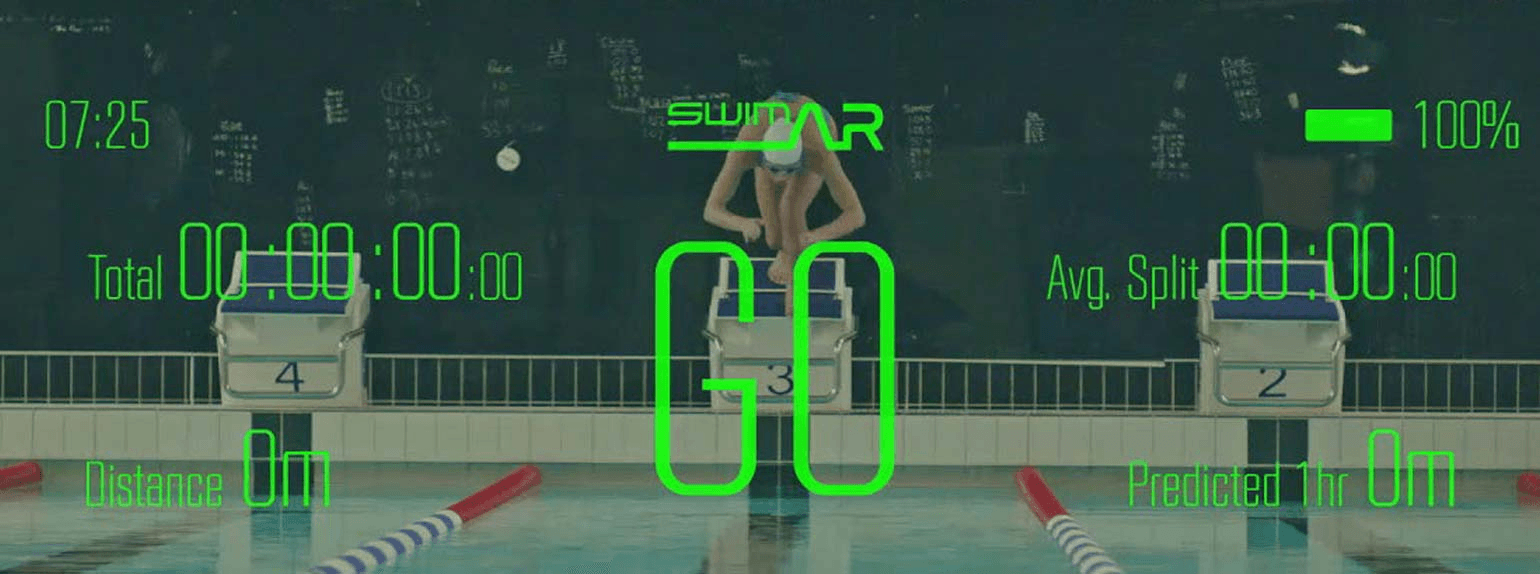Detecting cancer with computer algorithms
The healthcare industry has become a leader in the adoption of AI. Over recent years, the abilities of deep learning technology – the engine beyond AI – have matured and are now capable of detecting diseases.

Can computer algorithms really detect cancer?
So advanced has the technology become that medical researchers now agree that AI now performances as well or better than healthcare professionals when diagnosing cancer, according to study published by The Lancet Digital Health in September 2019.
Thanks to technological breakthroughs in computer science, we can now program machines through algorithms that identity cancerous cells on medical images, even long before they become dangerous to patients.
Furthermore, advances in deep learning are bound to become even more efficient in identifying diagnosis in the next few years, making the technology’s widespread usage inevitable.
At the moment, the accuracy of medical imaging diagnosis conducted by doctors is low, with professionals recording 20 to 30% false positives in chest X-rays and mammographies. Meanwhile, an AI tool that was combined with radiologists was able to identify breast cancer with 90% accuracy, New York University research unveiled. There is an important lesson here: The AI augmented the professionals’ ability; it didn’t replace them.
This AI-human relationship creates a life-saving application for emerging digital technologies. Given that 17 million cases of cancer were dialogized across the world last year, with that number expected to rise to 27.5 million by 2040, there is a large opportunity of real-world good that AI can serve in the medical community.
Making cancer diagnoses is only the small fraction of the possibilities that AI will be able to support. And, like most AI-backed technology, the industry is still it infancy and in great demand for technological specialists.
“It’s probably going to take two years before it [AI-backed diagnostics] really hits mainstream medical practice. Getting the technology to the patient is still the hard part”Angeli Moeller, head of artificial intelligence projects at Bayer
Google beyond the search engine: The Google machine detecting cancer
The world’s largest search engine, Google has now invested greatly in the development of AI technologies.

Owner of the world’s largest search engine, Google has become so much more than a popular means of surfing the web.
Through deep learning, a type of AI system, Google has “taught” its massive computer systems to read microscope slides to detect cancer.
“We have some of the biggest computers in the world,” said Dr. Daniel Tse, a project manager at Google. “We started wanting to push the boundaries of basic science to find interesting and cool applications to work on.”
The result was an AI system that proved to be more capable of detecting early forms of lung cancer than experienced radiologists. Since lung cancer is one of the most common forms of death on earth, Google’s AI is unarguably on the right track to saving countless lives.
Foto: Nación Farma
The driverless transport revolution
Robots on the road: It has long been a subject of science fiction; now it’s becoming a reality.

By introducing sensors and advanced computer technology to road vehicles, we can give them the ability of sight and decision-making. Through the Internet of Things (a system of interrelated machines), vehicles will thus be able to “interact” with the world around them, including other vehicles, traffic lights and speed detectors. In controlled environments, autonomous vehicles have proven to be exceptionally safe, outperforming people drivers, which are prone to human error.
But there is still a long way to go. Self-driving cars are still not available for end consumers, but they could slowly make it to market between 2020 and 2035, says a Vienna University of Economic and Business study.
“It is going to be a revolution but not a tragedy: more people will survive [on roads]; these vehicles will share their experiences and be even safer”Paul Newman. Founder of Oxbotica, a UK-based autonomous vehicle software company
Experts believe there are still about five to 10 more years before autonomous vehicles become as common, safe and practicable as taking a bike.
In reality, partially autonomous cars will become more common, representing a market of $36 billion by 2025, while fully autonomous cars will be worth just $6 billion by then.
Yet, despite numerous challenges – both technical and safety related – it is clear that the autonomous vehicle industry will only continue to grow for our benefit. In particular, supporters of the emerging industry say there is a natural opportunity to save countless lives.
The applications for autonomous vehicles are wide and global. China has already deployed autonomous vending machines that are smart enough to maneuver complex ecosystems. Google operates a self-driving car project called Waymo that has accumulated 338 patents. And big transport companies are talking about bold plans to build autonomous helicopters.
Truly, the driverless revolution has already begun. What the world needs now, ironically, are computer savvy pilots to develop the driver-less transport of tomorrow.
AUTONOMOUS VEHICLES IN NUMBERS
*Note: Autonomous vehicles weren’t’ responsible for any crashes they were in, and most crashes were at very low speed and with minor injuries.
Call an Uber, hold the driver: Uber’s autonomous vehicle experiment
The pioneering ride-hailing app Uber hit a road bump in its journey to autonomous vehicle development in March 2018.

In Tempe, Arizona, a pedestrian was killed by one of Uber’s first fleet of driver-less cars during a test run on public roadways. The woman killed, Elaine Herzberg, 49, became the first recorded fatality from a self-driving car.
Uber reacted to the accident by creating a self-driving safety and responsibility advisory (SARA) board. The group of appointed experts that sit on this board are now charged with reviewing, advising, and suggesting changes to policies for the company’s autonomous vehicles.
Following this hard-learned lesson, Uber deployed a new fleet of autonomous vehicle tests in Dallas, Texas last September. Starting in the city’s downtown area, human drivers will be tasked to collect mapping data and capture driving scenarios that can later be used to reproduce simulations.
“The data we collect will inform our next steps. While we are certainly excited by this possibility, we are also committed to ensuring that every mile we drive on public roads contributes meaningfully to our development work,” said Austin Geidt, head of Uber ATG (Advanced Technologies Group) strategy.
No self-driving vehicle trips are on offer yet. But Uber’s test runs will surely help to greatly advance data sets that can be fed into Internet of Things systems. Following Uber’s example, any company that develops autonomous vehicles will likewise need to invest in how to safely integrate these new machines into our messy and complex world.
Photo: Uber

Gamifying mundane sports activities
In the summer of 2016, PokemonGo brought augmented reality into the mainstream. Since then, computer scientists have been working to discover other applications for the emerging digital technology.

Shortly after the buzz of PokemonGo died down, the world of sports become one of the first arenas for AR disruption. Now, with AR glasses runners or swimmers can clock their work out stats, or even play a virtual game – not so different from PokemonGo.
Furthermore, the organizers of major sporting events are now catching on. Soon, attendees at soccer games may be able to rent AR glasses that feed them live game statistics and player interviews from the comfort of their couch.
“Your living room will transport you to wherever you want to be via augmented, virtual and mixed reality,” says Brendan Reilly, CEO of EON Sports VR.
The possibilities are massive and truly have only just begun to be understood.
THE FUTURE OF AUGMENTED REALITY
Industries surveyed as best suited for AR:
AR market growth:
AR Snapshot, 2020
1 BILLION
global AR users.
AR>VR
AR revenues will surpass VR revenues.
#1
Poor user experience number 1 obstacle to adoption.
16-34
Average user age years.
Form Swim Goggles: Diving into augmented reality
The desire to gamify a mundane sports activity like swimming was the catalyst behind AR swim goggles by Form, a newly launched digital fitness company.

The idea was simple: Combine Fitbit biometric data functions with the see-through smart displays of Google Glasses, then add the magic of augmented reality. The result was a groundbreaking aquatic AR experience.
“Swimmers can see their heart rate in our goggles’ display throughout their swim. This is a game-changer for swimmers, triathletes, and the coaches who train them,” says Form CEO Dan Eisenhardt.
While swimming, the goggles feed other real-time metrics of work out routine in front of the user’s vision, such as lap distances and integrals, and the device is built to detect what kind of style is being used, such as backstroke or freestyle. Never again will swimming laps be the same.
Photo: formswim.com

How blockchain enables payments for unbanked people
Blockchain has been the subject of incredible hype over the past years. The technology soared into the mainstream during 2018, when investment in bitcoin – a digital currency backed by blockchain – rapidly rose in value before quickly crashing.

But although the bitcoin bubble popped, the technology still remains. Blockchain — a system of decentralized, encrypted ledgers — is a technology that poises appealingly disruption applications to a variety of industries, including digital banking, supply chain and healthcare. The possibilities of digital currencies have even piqued the interest of governments. To date, 20 countries have adopted or researched a national cyprtocurrency, a currency that is backed by blockchain technology.
Still the most common application, however, is making secure digital payments, which are possible with blockchain even if the receiver has no bank account. One of the most anticipated developments in this field is Facebook’s cryptocurrency, the Libra, which currently faces many obstacles to launch.
Thus, the ability to connect non-banked users to global finance has allowed for innovative applications, including “rewarding” participants to pick up plastic pollution in the Philippines and Indonesia, two of the top-three most polluted coastal nations in the world.
“French President Emmanuel Macron has expressed an open attitude towards blockchain and cryptocurrencies since serving as Minister of Economy and Finance in 2016, and it is this attitude that has allowed the country’s tech and startup scene to flourish”Corentin Denoeud, CEO and Co-Founder of Blockchain Studi
BLOCKCHAIN: SNAPSHOT
A new banking revolution:
Global blockchain solution spending:
Plastic pollution for digital cash: Bounty Network’s blockchain-backed payments incentivize garbage clean-ups
One of the main supporters of the ethereum cryptocurrency, Joseph Lubin co-founded Brooklyn-based ConsenSys to deploy blockchainbased software solutions.

The company has since launched over a dozen blockchainbased ventures, including Bounty Networks, a platform that “rewards” participants in exchange for plastic recycling.
The company launched their first major plastic clean-up drive in the Philippines, aiming to tackle the notoriously polluted Manila Bay. After just a few days of cleaning, the company made $700 in digital payments to a group of mostly local fisherman to remove three metric tonnes of waste. The same result using traditional government programs would have cost $10,500.
Photo: Bounty Networks
THE BOUNTY FOR BASURA - FULL DOCUMENTARY

COMPUTER SCIENCE AND AI TAKEAWAYS

MACHINES POWERED BY AI ARE COMPLEMENTING HUMAN ABILITIES, NOT REPLACING THEM

THERE IS EXPONENTIAL GROWTH PREDICTED ACROSS NUMEROUS FIELDS OF EMERGING DIGITAL TECHNOLOGIES, INCLUDING BLOCKCHAIN, AUGMENTED REALITY AND AI TECHNOLOGIES IN GENERAL

THESE ARE EARLY YEARS. THE MOST TRANSFORMATIVE TECHNOLOGIES OF TOMORROW ARE STILL NOT WIDELY ADOPTED OR UNDERSTOOD

